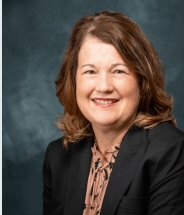A report from Moody’s Ratings service contends that one good hurricane this year could wipe out the Florida Cat Fund’s reserves, potentially forcing it to place a small surcharge on Florida insurance premiums to finance more debt.
But that may not be such a big deal.
“…The burden on insurance policyholders ($85 billion premium base) and the state economy ($1.6 trillion state GDP) would be quite low,” reads the report, authored by senior analysts at Moody’s and based on data from the Florida Hurricane Catastrophe Fund.
The chief operating officer of the Cat Fund, Gina Wilson, agreed.
“It would not be material to the population,” Wilson told Insurance Journal.
The report notes that the Cat Fund, which all Florida property insurers rely on for a share of their reinsurance coverage, at lower cost, has just $6.9 billion in reserves, which includes just over $3 billion in what’s known as “pre-event bonds.”

Hurricane Ian, which caused extensive damage to southwest Florida in 2022, resulted in almost $10 billion in losses to the fund, diminishing its reserve funding levels considerably. So, another Ian-sized storm would burn through the current reserves — and then some, Moody’s said.
“This could lead to greater reliance on debt to pay claims and augment the fund for subsequent seasons,” the report noted.
Others have warned that a depleted Cat Fund would force Florida insurers to purchase more expensive reinsurance from the private market.
But Wilson doesn’t seem too concerned.
“We feel like we have ample liquidity to respond if we have a hurricane,” she said. Wilson added the fund, part of the State Board of Administration, enjoys favorable financial ratings and is a good credit risk.
Ben Watkins, the state’s director of bond finance, told Bloomberg news service that that the bond authority and the fund are in a similar position every year.
“We are very comfortable with the financial position that we’re in with substantial accumulated reserves and the liquidity financings on top of that,” Watkins said.
Even with the forecast of a heavy hurricane season this year – a tropical disturbance was under watch near the Caribbean Sea Thursday morning – the Cat Fund and its bonding capacity appears to be in good-enough shape that Moody’s is now considering it for a possible ratings upgrade, the report said.
The Cat Fund is statutorily capped at a $17 billion in liabilities. So, even if two big hurricanes hit Florida this year, the fund’s obligations are somewhat limited, Wilson said.
“We feel like we’re in a good position to respond” to insurers requesting reimbursement after storm losses, she added.
Others in the industry pointed out that the Moody’s report reiterates much of the information provided in the fund’s Claims-Paying Capacity Estimates report in May from the Raymond James financial advisory firm.
“It is true that a 100-year storm would cost the fund between $16-17 billion, exhausting reserves and requiring borrowing of approximately $10 billion,” said John Rollins, a former insurance carrier chief financial officer, now with a resurgent Anchor Property & Casualty Insurance Co. But, he noted, five investment banks polled semi-annually by the fund have indicated that the money could be raised in 12 to 24 months.
Others weren’t so sanguine about the state of the fund.
Ian Gutterman is a longtime investor in insurance companies and a frequent blogger who has raised questions about the Cat Fund’s resources. He said this week that an assessment on premiums may not be enough to fully cover the gap.
And it’s not certain that investors will buy enough pre-event bonds at reasonable rates, Gutterman said. The fund earlier this year considered a $1.5 billion bond issue, but settled for $1 billion.
“It’s unrealistic to think they can raise $7.5 billion” with pre-event bonds. “What happens if they try to issue bonds but nobody will buy them?”
Wilson discounted those concerns. She said that the fund elected to reduce its bond issue this year to $1 billion due to the cost, not because bond buyers were skittish.
“We looked at the cost to carry that. It was our option. I mean interest rates were up,” Wilson said. “It’s not an indication that the market is not responding favorably.”
The Moody’s report also noted that Citizens Property Insurance Corp., Florida’s state-created insurer of last resort, is well-positioned to deal with a major hurricane this year without floating more debt or assessing policyholders.
That’s largely due to the fact that Florida lawmakers in 2022 allowed Citizens to combine its three accounts – personal, commercial and coastal. That has given the corporation much more maneuverability in covering losses.
“By merging the three, resources are pooled, lessening the likelihood of any one line requiring additional debt financing,” Moody’s noted.
“Combining accounts gives Citizens more flexibility in paying claims following a disaster without having to resort to assessments,” Citizens spokesman Michael Peltier said. “That’s good for Citizens, policyholders, and other Florida insurance consumers.”





















 The Hardest Part of Innovation in Insurance Isn’t Technology; It’s Culture
The Hardest Part of Innovation in Insurance Isn’t Technology; It’s Culture  Examining 5 Key Factors Fueling MGA Growth—and Emerging Challenges Ahead
Examining 5 Key Factors Fueling MGA Growth—and Emerging Challenges Ahead  Berkshire Hathaway Announces Leadership Appointments: New CEO at GEICO
Berkshire Hathaway Announces Leadership Appointments: New CEO at GEICO  Legal Finance and Insurance: From Confusion to Collaboration
Legal Finance and Insurance: From Confusion to Collaboration 




